The story, and character, of nations and their institutions can best be studied by looking at the people who serve them - how they interact with each other through good and bad. What is rewarded, what is punished … and why.
When you look at a sister organization - in this case the navy of a nation very similar to ours - and you see how they treat their people, does yours come off better or worse?
There are some examples who stick out that are worthy of a deep pondering. I won’t tell you what the results of your pondering and benchmarking are - I just want to set the table and point you to a man who just passed at age 81, Captain Steve Taylor, RN.
How did your Midshipman cruise go? Did they let you let you have the con during a man overboard exercise? How cute;
His first ship was the minesweeper Dartington based in Kuching, Sarawak, where within a few hours of joining, Midshipman Taylor found himself in command of a klotok (a large riverine canoe) with 20 Gurkha soldiers, chasing rebels in the rivers of Borneo.
So, from that fun start you progressed to your first sea tour … how would the rest of your naval career go?
Next, he was navigating officer in the fast patrol boat Brave Borderer when she ran aground on a sandbank in the Danish archipelago during a Nato exercise. She was refloated without damage, and the naval attaché in Copenhagen, who saw a photograph of the grounded vessel in the local newspapers, was good enough not to report it.
Well, in spite of that spot of bother, you get early command of a minesweeper. How did that go for a “get well tour?”
In 1971, Taylor proved to be a vigorous commander of the minesweeper Belton on fishery protection duties, based in Port Edgar. In his first year in the six-ship squadron he made seven of the squadron’s 40 arrests, and, almost as difficult, their successful prosecutions in court.
During one arrest, a French trawlerman refused to heave to, despite orders to so do by radio, warning shots and, from close alongside, by loudhailer. Rude hand signals were the only response waved out of the bridge window, until one of Taylor’s stokers, coming on deck for a breath of fresh air, took objection to the insult to his captain and threw a potato, which by chance flew through the window.
The skipper promptly appeared on deck with his hands up: it is thought to be the only time a British man o’war has used a King Edward potato in such a capacity.
It says something about the quality of a Commanding Officer when a junior rating will defend his honor with a tuber.
Noted.
Then on Trafalgar Day 1971, Belton battered her way through heavy seas to rescue Susan Fogden, an Oxford scientist marooned for nine days on the Monach Islands in the Outer Hebrides while conducting a survey of seals. She was low on food but in good health – until she was rescued, when Belton’s violent motion in the rough seas made her “terribly seasick”.
Taylor anchored in Lochmaddy, North Uist, to toast belatedly the Immortal Memory in the Army mess at Benbecula, but when told in the early hours that Belton had dragged her anchor, he decided to weigh anchor and leave. However, Belton ran aground on 75-knot winds and was badly damaged.
The words don’t do that justice. We have a pic.
How did the Royal Navy respond?
Though found guilty at court martial and reprimanded, Taylor and his ship’s company were sent to Gibraltar to bring Chawton out of mothballs, and to rejoin the Fishery Protection Squadron. Taylor’s time in Chawton included a 60-mile chase up-Channel after a French trawler, and his arrest of the Soviet spy-trawler Yubileiny: both were followed by successful outcomes in court.
Yep’r. Get back to sea - there is work to be done.
After some solid staff officer work during The Falkland Island War at Northwood (I love that HQ), he was selected for Commander Command. How did things go?
His 1984-85 command of the destroyer Manchester was enlivened by a Soviet spy ship, which, despite warnings in the international code of signals, zigzagged across his course while he was underway and replenishing ammunition from the fleet auxiliary Resource during a Nato exercise. Taylor held his nerve and is said to have “shaken his fist in anger” when the Russian got too close. He also claimed an entry in the Guinness Book of Records for the furthest-travelled barrel of beer, carrying a barrel of Ballards Brewery’s winter ale from his home village, Rogate, West Sussex, to drink in Port Stanley on Christmas Day 1984.
That is legend. Well, one CDR Command is great … how about another?
In 1988 he was commanding the destroyer Southampton on the Armilla Patrol, the Navy’s standing presence in the Persian Gulf, which escorted ships through the Straits of Hormuz. The 5,000-tonne Southampton had been three weeks on patrol when, on the evening of September 3, she was run down by P&O’s 35,000-tonne container ship MV Tor Bay.
Taylor was in his cabin discussing the night’s operations with his first lieutenant when he sensed danger and rushed to the bridge, arriving to find Southampton’s bridge roof crushed and the flare of Tor Bay’s bows towering over him. A triangle in the shape of Tor Bay’s bow was cut into Southampton, and under water her bulbous bow tore a 33 ft gash in Southampton’s side; the two ships remained locked together for several minutes.
During the succeeding night, a board of inquiry found, there were many acts of dedication and great professional skill which saved Southampton. Astonishingly, her people escaped with only slight injuries.
Over the next hours and days, Tony Radakin, then a young midshipman on vacation from reading law at Southampton University and now Chief of the Defence Staff, learnt many sound lessons from Taylor – about leadership, management in crisis and damage control. “Taylor was a picture of calmness and clarity,” Radakin recalled. “We were all shocked watching footage a few days later of the Sea Dart missile compartment and the physical damage to many of the missiles, and very aware of how lucky we had been.”
Southampton returned to the UK aboard a semi-submersible heavy lift ship, her repairs costing some £45m. The board of inquiry held that Taylor had “placed unjustifiable trust in his officer of the watch and failed to acquire the information necessary to ensure his ship’s safety” and that this amounted to negligence. He was tried by court martial and found guilty, but given another command, Southampton’s sister ship Exeter.
Again, we have a pic to go with your next promotion board.
Surely, that would have put an end to things, right?
In 1990-91 Taylor ran the Maritime Tactical School, where in the run-up to the first Gulf War he war-gamed scenarios, liaised with the US Navy and wrote a concept of operations for naval operations in the Gulf. His final appointment was as Commodore Naval Ship Acceptance, responsible for seeing that shipbuilders delivers new ships according to contract.
Just look at that smile. I think that says a lot for an official photo.
A little note here. Yes, he is wearing Commodore (RDML in the USN) shoulder boards but retired as a Captain, one grade below. This is common in the UK and other nations where you wear the rank of the job you have, which may or may not be your permanent rank. I learned that in NATO when I thought the Lieutenant Colonel of the Royal Marines I worked with was just an O5 (OF4), but at the Trafalgar Day dinner I saw that - in that glorious Royal Marine Dinner Dress uniform - he was actually a full Colonel. My RAF Regiment Squadron Leader drinking partner proceeded to explain it all to me from there. I think I remember it correctly, it was a Trafalgar Day dinner and all the toasting etc.
So, when did this exceptional officer go from here?
Retiring from the Navy aged 52, for the next 25 years he was consultant to companies involved in maritime security and safety, before setting up the maritime division of the Defence Manufacturers Association and becoming naval advisor to Defence and Security Equipment International.
He joined the technical board of the Nautical Institute, was chairman of Lloyd’s Register’s Naval Ship Rules (NSR), president of The Anchorites (a dining club for the promotion of good fellowship among those interested in maritime affairs) and senior member of the court of the Honourable Company of Master Mariners.
To all these organisations, and especially the Wellington Trust – which looks after the 1935 Grimsby class sloop HQS Wellington, home until this year of the Master Mariners – he brought his contagious enthusiasm and his special brand of flamboyance and élan.
A long life, well lived. He had a one shot, and he did it well.
BZ and fullbore Captain. Fullbore.




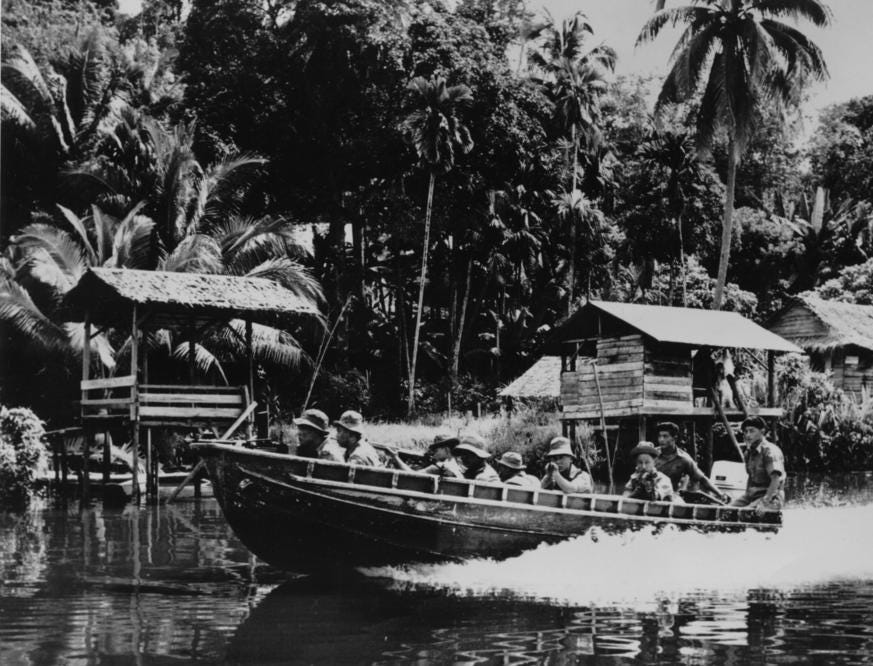
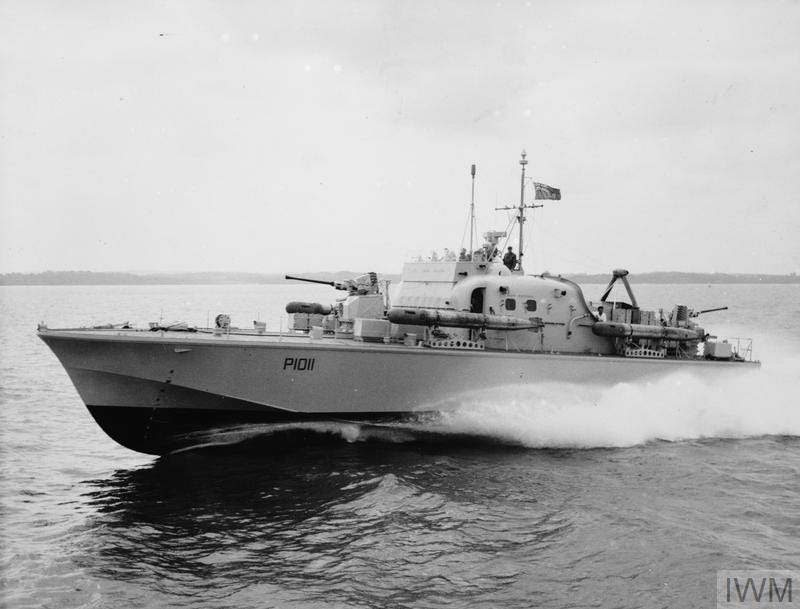
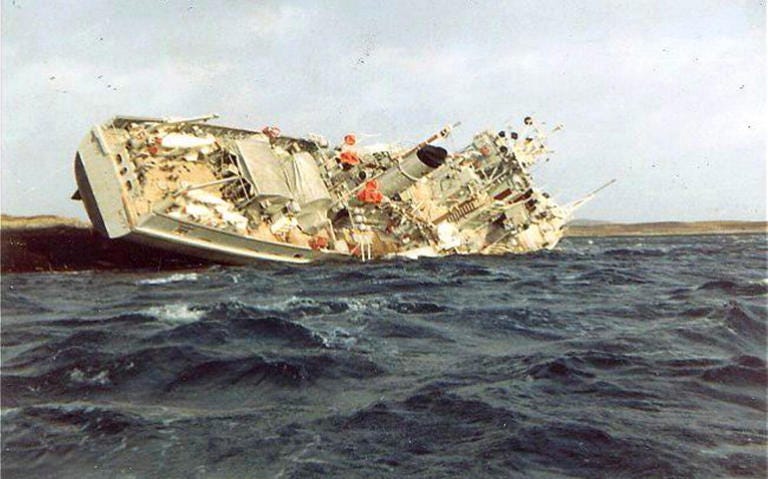
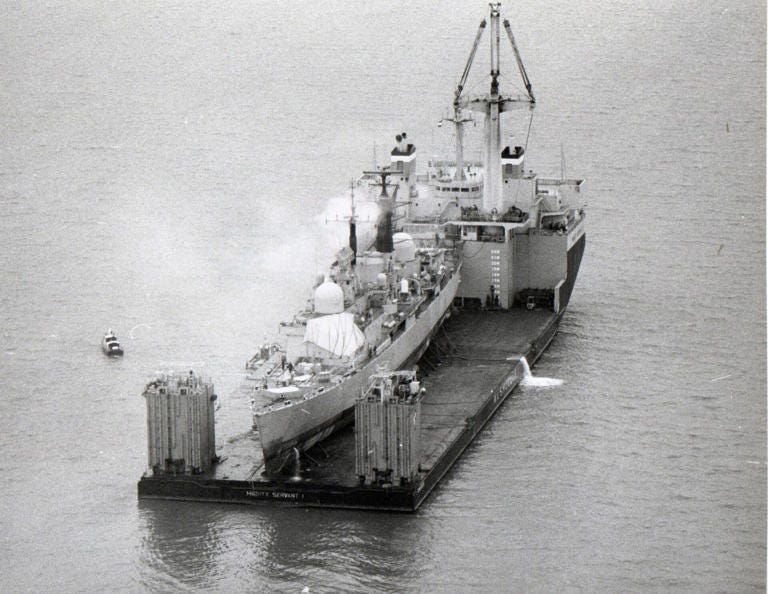
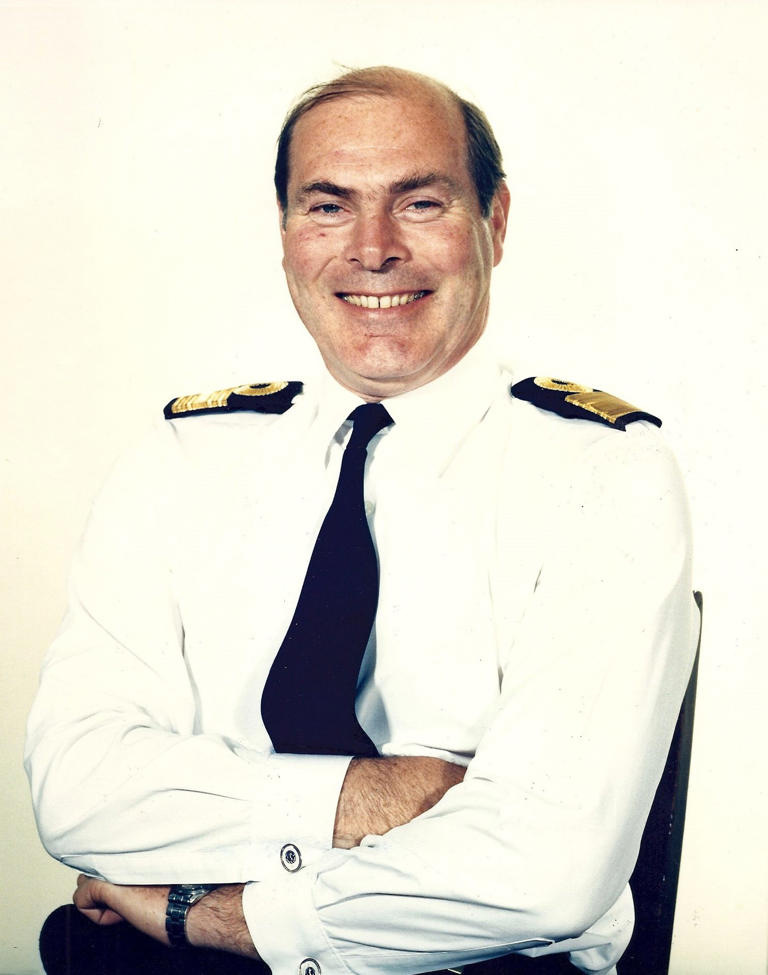
I'm most jealous of:
"Midshipman Taylor found himself in command of a klotok (a large riverine canoe) with 20 Gurkha soldiers,"
More courtsmartial convictions than Custer, ;)
He's the Captain James Tiberius Kirk of the Royal Navy.
Glorious.